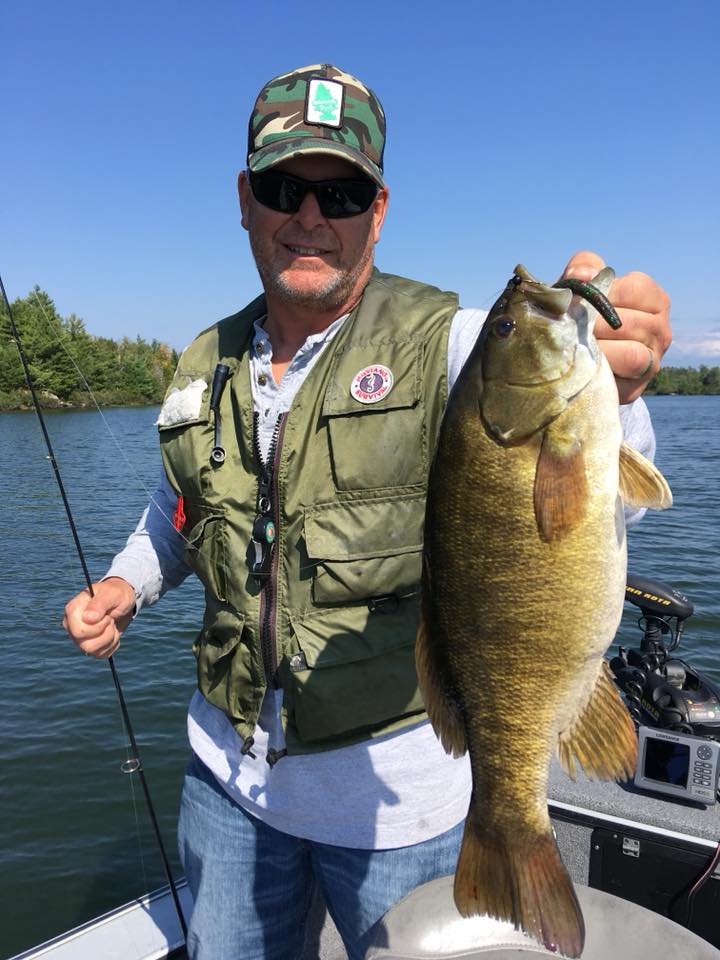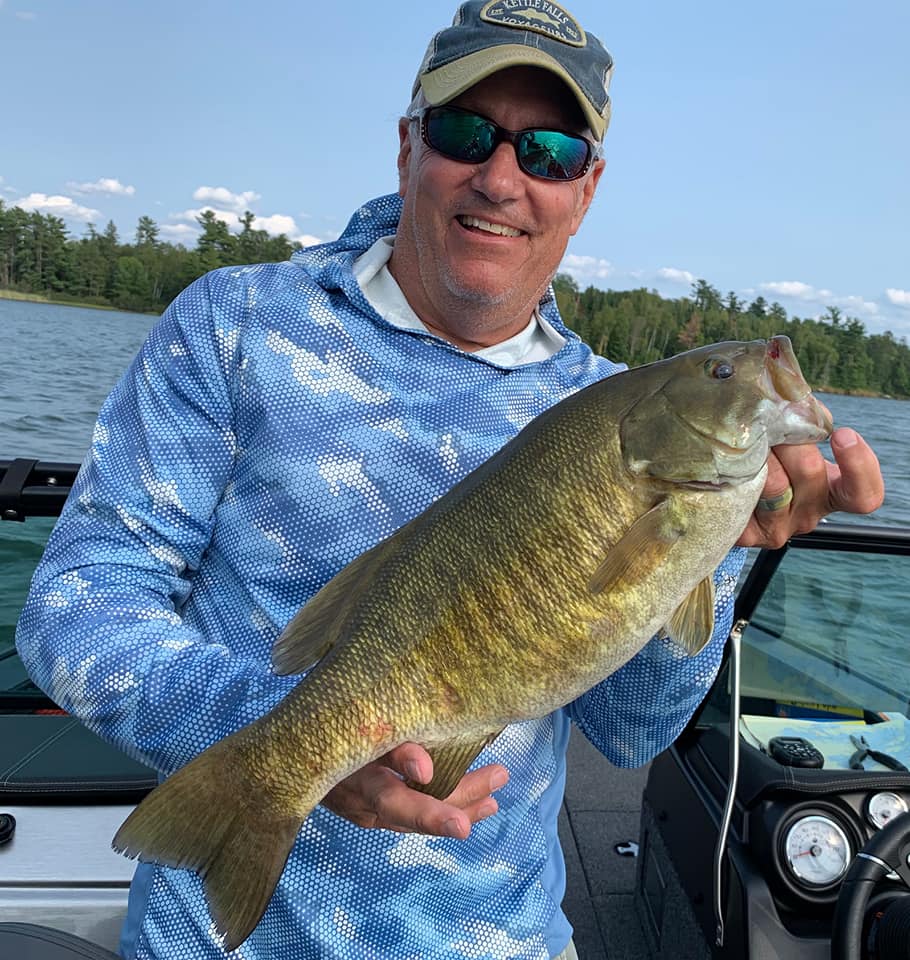Rainy Lake Smallmouth Bass Fishing
Rainy Lake’s smallmouth bass is some of the best in Northern Ontario, if not North America. The structure of the north arm of Rainy Lake is ideal bass habitat. Smallmouth bass fishing on Rainy Lake is truly an avid fisherman’s outdoor adventure.
Rainy Lake’s Smallmouth Fishery is Rated Amongst the World’s Best
Our resort is a boat-in, which brings you minutes away from the best area’s on the lake. If you wish, our Rainy Lake guide service can show you the areas and structure of the lake and help you with techniques to catch these awesome trophy smallmouth bass. If you prefer to fish on your own, we have navigational Rainy Lake maps and are very willing to mark the hotspots. Casting, trolling and even flyfishing for bass are all very effective ways to fish Rainy Lake. Ontario smallmouth bass fishing on Rainy Lake is truly an avid fisherman’s outdoor adventure.
Rainy Lake’s smallmouth bass is some of the best in Northern Ontario, if not North America. The structure of the north arm of Rainy Lake is ideal bass habitat. Smallmouth bass fishing on Rainy Lake is truly an avid fisherman’s outdoor adventure. There are hundreds of islands with baseball to basketball sized boulder shoals and reefs coming off of them. Large areas of cabbage and pencil weed along side these shoals and reefs create unbeatable habitat. Crayfish, bait fish of all kinds, and especially smelts are the main forage.
Our catch-and-release policy on smallmouth bass will ensure that Rainy Lake’s North Arm will continue to have a world-class bass fishery.

Let Your Next Fishing Adventure Begin
Rainy Lake is famous for its fishing and scenic beauty. As Northwest Ontario’s top drive-to fishing destination, its world-class fishing offers trophy walleyes, northern pike, smallmouth bass, crappies, and more.
Rainy Lake Smallmouth Bass Fishing Info
Spring fishing (pre-spawn) in May and early June is done off of any point or reefs with some sandier areas in behind. The smallmouth bass congregate in water around 14′ -18′ deep, waiting for the water temperature to warm up. This is the time when tube jigs and grubs work the best. Plastics can also be thrown to the shores.
When the ice goes off the lake, the smallies move up into the very shallow water and start to feed. Slow moving plastics thrown shallow and retrieving slowly back is productive.
During the first couple of weeks in June, the spawn is on. We prefer you do not target bedding areas. Fishing on the outer edges or points adjacent to these areas will pay off.
During the summer months, the fish are found in many areas of the lake. Some school up and chase the smelts in the deep water’s away from the structure. Others can be found in the huge cabbage beds in shallower water. Depending on the weather of the day and evening, top water bites are awesome. Windier days weightless plastics or weighted tubes or grubs can be thrown towards the wavy points or banks. Jigging in deeper water, trolling, fly-fishing, crankbaits, etc can all be used. Just ask us, we will be sure to tell you what is working at the time.
Fall fishing, probably the best of the year, is done on the sunken humps and rocky deeper points. The smallmouth school up in the hundreds. This is also the time of year when you really know what “fish eating smelt” is all about.

Tom’s Fishing Tips
- Smallmouth bass can be found in thousands of Ontario’s rivers, creeks, and lakes. Smallmouth are most active from late spring to late autumn and can usually be found in more open water or along rocky points, drop-offs, or shoals.
- When targeting smallmouth try curly-tailed jigs, crankbaits, shallow-diving spinnerbaits, in-line spinners, streamer flies, or crayfish imitations.
- Live bait is also effective. Leeches, minnows, and juicy night crawlers rigged beneath a float or with split shot on the bottom will draw strikes. Smallmouth are particularly fond of crayfish, especially soft-shells that have just molted.



